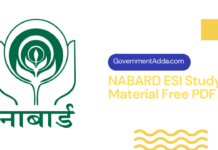 For Daily Job Alert For Daily Job Alert |
Join Our Whats App Channel |
 For Free Study Material For Free Study Material |
Join Our Telegram Channel |
SEED PRODUCTION
Seed is any material used for planning & propagation whether it is in the form of seed (grain) of food, fodder, fiber or vegetable crop or seedlings, tubers, bulbs, rhizomes, roots, cuttings, grafts or other vegetative propagated material. Seed is a fertilized ovule consisting of intact embryo, stored food (endosperm) and seed coat which is viable & has got the capacity to germinate.
As we say, “Reap as you sow”, the good quality seed must have following characters:
1. Seed should be genetically pure & should exhibit true morphological & genetically characters of the particular strain (True to type).
2. It should be free from admixture of seeds of other strains of the same crop or other crop, weeds, dirt and inert material.
3. It should have a very high & assured germination percentage and give vigorous seedlings.
4. It should be healthy, well developed & uniform in size.
5. It should be free from any disease bearing organisms i.e. pathogens.
6. It should be dry & not mouldy and should contain 12-14% moisture.
Seed is the basic input in the crop production which should be of good quality.
SEED PROCESSING
After harvest the seeds need to be processed by various methods in order to maintain the physical purity and also to increase the shelf life. This should be done before seeds are taken for storage.
Cleaning Stem bits and chaff collected along with the seeds will harbour insects which would damage stored seeds. In order to prevent such damage, cleaning either by wet method or dry method should be followed.-
i. Wet cleaning – Plants which carry seeds in their moist flesh can be cleaned by this method. Seeds scooped from the flesh of a ripened fruit should be collected in a vessel and rubbed vigorously with coarse sand to remove flesh around the seeds. Then seeds are taken in a sieve and washed repeatedly under running water to remove the bits and pieces of flesh and mucilage. After such cleaning seeds should be dried for 10 days before storage. E.g. Cucumber, Tomato etc.
ii. Dry cleaning – This method is used for the matured seeds in a dry capsule / pod. Either the dry pods can be harvested individually or the whole plant with the pod is pulled out and shade dried, threshed for the collection of seeds. After threshing seeds are gently crushed or rolled and winnowed before storing. E.g. Paddy, Millets, Pulses, Oilseeds etc.
Winnowing It is an ancient method to remove the chaff from the seeds by tossing them in the air. Elongated flat baskets are used for winnowing. It helps to remove stem bits, old petals, husks and other parts of the flower and debris mixed with the seeds. There are also mechanical winnowers available.
Sieving Sieves with different gauge sizes are used for sieving in order to remove the debris and chaff from the seeds. Large debris retains in the larger sieve, whereas the dust materials smaller than the seeds is removed in the small size sieve.
Drying of Seeds Seed drying is the process of lowering the moisture content of the seed in order to improve the vigour and viability of the seed and thereby increasing the storage life. It helps to keep the seeds free from pest and disease incidence. Drying should be done at a lower temperature. During drying, first the moisture from the seed surface will be evaporated and the moisture from inner layers of the seed is transferred to the surface for further drying.
seed village
A village, wherein trained group of fanners are involved in production ‘of seeds of various crops and cater to the needs of themselves, fellow fanners of the village and fanners of neighbouring villages in appropriate time and at affordable cost is called “a seed village”.
Concept
♦ Organizing seed production in cluster (or) compact area
♦ Replacing existing local varieties with new high yielding varieties.
♦ Increasing the seed production
♦ To meet the local demand, timely supply and reasonable cost
♦ Self-sufficiency and self-reliance of the village
♦ Increasing the seed replacement rate
Features
♦ Seed is available at the door steps of farms at an appropriate time
♦ Seed availability at affordable cost even lesser than market price
♦ Increased confidence among the farmers about the quality because of known source of production
♦ Producer and consumer are mutually benefited
♦ Facilitates fast spread of new cultivars of different kinds
Advantages of Seed Village Concept or Compact Area Approach
1. Solve the problem of isolation. Mainly in cross pollinated crops like maize, sunflower where it required more Isolation distance the problem will be solved by raising a single variety in a large area.
2. Mechanization is possible from sowing to harvesting
3. Post-harvest handling of seed is easy .
4. Because of a single variety, the problem of varietal admixture during processing, drying will be avoided
5. Seed certification official will cover large area per unit time
6. Totally it reduces the cost of cultivation
7. Seed will be with high genetic, physical purity











